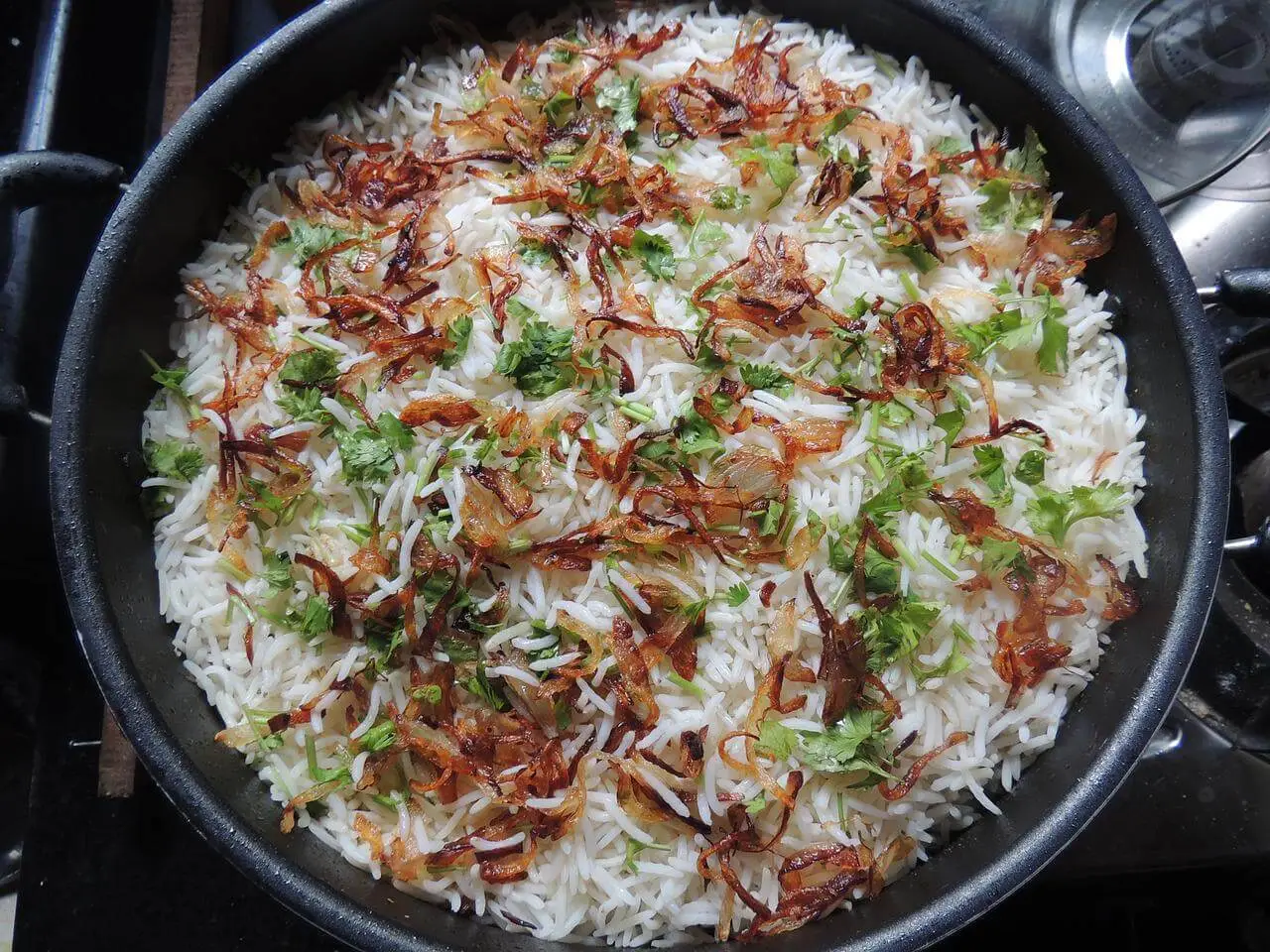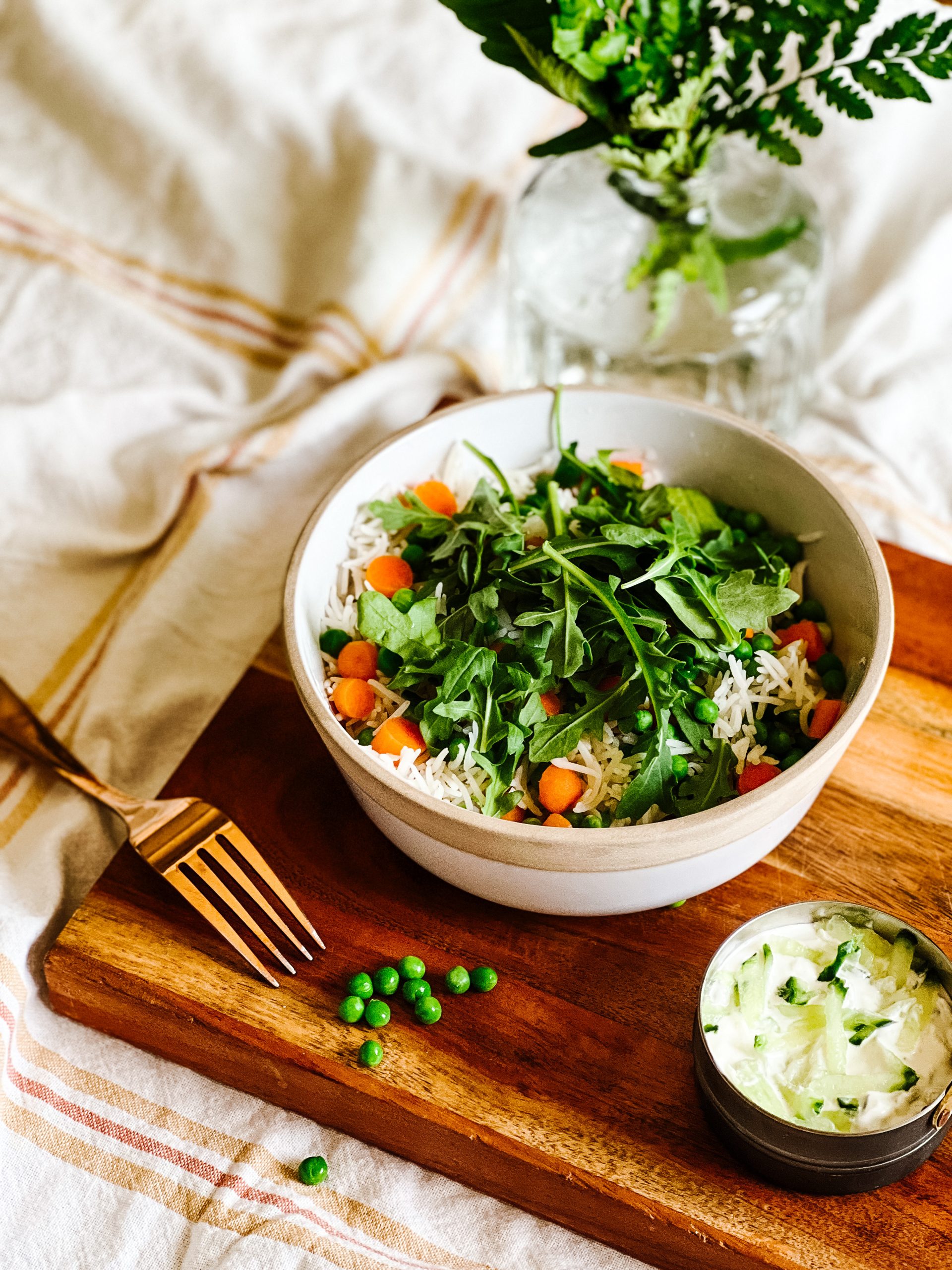Get to know why Japanese curry rice is not only the ideal winter dish that originates from a faraway land but also, why it’s still so popular in Japanese food. Rice and curry bring a waft of aromas and the comforting flavours brought on by a mix of herbs and spices. Let’s make Japanese curry rice! Also, discover and try Dainty’s curry rice recipes.
What are the origins of curry rice?
Curry powder and all the base sauces made from it, originate from India. Each region in India and beyond – notably South-East Asian countries – have their own precise recipe. With varying amounts of spices and herbs, they bring a local flavour to what is clearly a national dish.
However, Japanese curry (karē) is a different recipe altogether, having retained some of the original spices from the Indian version, but with a sweeter undertone and much less spiciness. Japanese curry rice (karē raisu) is one of the many ways they choose to serve stew, which can also be accompanied with noodles (karē udon) or any type of bread.
History of Japanese Curry
Curry originated in Indian cuisine, having been brought to Japan by the British in the 1800s, obliging the Japanese to end their isolation (sakoku). Later, the Imperial Japanese Navy adopted curry, as it was nutritious and easy to prepare in massive quantities, while also helping to prevent beriberi. With the Navy’s wide use of curry, gradually, the dish became more popular and more readily available. It has undergone changes to suit the Japanese palate.
Indeed, Japanese curry bears little resemblance to curry from whence it originated, India, or other South‑East Asian regions that have their own variations.
It is considered one of the nation’s most popular comfort foods, belonging to a class of dishes called yoshoku—Western foods that the Japanese have adopted, and while having been adapted to such an extent that it stands as uniquely Japanese, and is now considered a national dish of Japan.
What are the types of Japanese curry?
Japanese curry has its own set of ingredients that make it stand apart from other curries – pieces of tender meat, potatoes, sweet carrot, and sometimes green peas – in a sauce that is subtly sweet, yet spicy and with low to moderate heat.
The sauce is typically made from either curry powder, or a curry roux. Roux is a paste made from flour, some sort of fat (unsalted butter, oil) and the flavour base, in this case, the curry. In both cases, the curry is a blend of basic Indian spices, which we will discover later on. Authentic Japanese curry tends to be thicker in texture, have a sweeter taste than its Indian forebear, but its spiciness has been adjusted to the Japanese palate.
Another variation on the typical Indian curry, is the use of pork or beef most commonly used in karē. Indian curry tends to use chicken or mutton, along with the vegetarian variants.
S&B is considered the main Japanese curry brand, which comes in powdered form; this requires that the home cook make their own sauce from scratch.
A more convenient form of the spice blend are blocks of solidified roux. The home chef just needs to cook the meat and vegetables, add water or broth, and then dissolve the blocks into it until a thickened sauce forms. Discover how to make the perfect risotto.
Home‑Made Version of Curry Powder Mix
Japanese curry powder is comprised of roughly 80 to 90% of the following:
For hotter spices, then count for around 5% of the blend. There are different spice levels. Depending on your taste and tolerance for heat, you may increase the amount of hot spices, while decreasing the amount of turmeric in the same proportion.
- Black pepper (2 – 7%)
- Chili or cayenne pepper (0.5 – 2%) The remaining 5 – 15% of the blend are aromatic spices.
- Clove (3 – 5%)
- Fennel (1 – 2%)
The following list is of spices that will take up a tiny (1 – 2%) proportion of the final blend, but help give it its distinctive taste and aroma.
- Nutmeg
- Fenugreek
- Bay leaf
- Cinnamon
- Oregano
- Star anise
- Allspice
- Sage
- Coffee powder
- Cocoa powder
So if you’re feeling adventurous and even inventive to create your own, bespoke curry powder, here are the steps:
- Toast in a dry frying pan for about 2 to 3 minutes;
- Let cool;
- Grind to a powder in a spice grinder;
- Store in a cool, dark place for 3 to 4 weeks before using. This will allow the aromas to mature.
Home-Made Japanese Curry Roux
Once you have the curry mix to your liking, you can take the preparation one step further, by making your own roux. This is flour and butter mixture to which the spices are blended. It holds a few advantages to the curry powder form, mainly that mixing the spices to a fat base really brings out and enhances the flavours of some of them.
Plating curry before serving usually is often accompanied with a sprinkling of cilantro. But being a herb from tropical regions, the zesty, aniseed aroma is not a part of Japanese curry rice recipes. It is best left to Green Thai Curry or other such recipes from South-East Asia.
Japanese Curry Rice Ingredients
So without further ado, once you have decided upon using the roux or the curry mix – either of which could have been home-made or purchased, here is our recipe for an authentic, scrumptious, comforting, dare we say it, filling, Japanese curry rice.
- 1 1/2 cups / 375 mL Dainty Jasmine rice
- 1 1/2 cups / 375 mL of water
- 4 x 150 g = 600 g / 1 ½ lbs of any cut of beef or pork suitable for stewing, or chicken thighs – cut into 2-inch cubes
- 1 tablespoon vegetable oil
- 3 yellow onions quartered
- 1 pinch black pepper, or to taste
- 4 carrots, cut into 2‑inch pieces
- 100 g green peas (optional)
- 1 cube chicken bouillon (optional)
- 3 medium potatoes, cut into 3‑inch chunks
- 2 tbsp Japanese Curry powder or roux.
Preparation
- Cook the Dainty Jasmine rice according to the package instructions. If you cook Dainty Jasmine rice in a rice cooker, use the same ratios of rice to liquid.
- Turn the heat and preheat a large pot over a medium-high heat. Add the vegetable oil to the pot. Add the chopped yellow onions and cook for 8-10 minutes, periodically stirring until it’s nicely golden brown.
- Place the meat of your choice in the pot, and cook until it’s golden brown..
- Cover the meat with water or chicken broth (having previously diluted the broth)
- Sprinkle the curry powder or roux to the liquid, and stir until fully dissolved.
- Add the cut carrots, potatoes, and peas if you have opted for them.
- Cover the pot and stir from time to time.
- Cook until the vegetables are tender and season with salt and black pepper to taste.
- Serve with the Dainty Jasmine Rice. The white rice should be fluffy and easily separable when mixed with a fork.
Note: Rinsing and soaking Dainty rice is not necessary as it is already cleaned. To learn more, read on our rice encyclopedia.
Kick back and enjoy this Japanese curry rice recipe, the most renowned comfort foods in the world.
Discover Dainty’s Curry Rice Recipes
- Rice Cooker Chicken Curry Rice Meal
- Rice Cooker Thai Curry Scented Rice with Salmon
- Green Thai Curry Rice Bowl
- Easy Coconut, Kale and Sweet Potato Curry









Leave a Reply